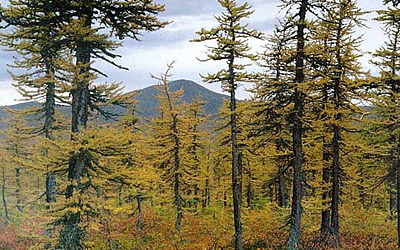I do not know where to start after a long period of not writing something in my blog. After GE13 , Malaysian people are more likely to search and read about what is going to happen next with Barisan Nasional hold another five years to continue their triumph. Let be gone be by gone. I have to move forward, and I think it is best to be reasonable by looking back to my original motive of establishing this blog, to share the knowledge of forest with the people. That is more like it.
As I mentioned in my previous posts, there are three (3) major forest biome in the world namely:
1. Rainforest,
2. temperate forest, and
3. boreal or taiga forest.
Both are the major constituents that are so very important in balancing the world climates. I have discussed about rainforest in my previous post and I will discuss more about boreal or taiga forest biome in this post.
INTRODUCTION
Let us take a look at the first step, what is this boreal or taiga forest? Taiga is the Russian word that has to do with the swampy nature of this biome in the summer. Taiga is also known as boreal forest that came from Greek word means "north". This "north" is actually refer to the northernmost location of this forest that is covered by large area of trees. If we move far north towards the north pole suddenly after the taiga forest boundaries, the terrain is covered almost by white snow leave no trace of any kind of trees.
CHARACTERISTICS AND AREA
The taiga or boreal forest stretches over Eurasia and North America. The taiga is located near the top of the world, just below the tundra biome. The winters in the taiga forest are very cold with only snowfall. The summers are warm, rainy, and humid. Gymnosperm or in common tongue coniferous trees dominated this kind of landscape characterized by its cylindrical bole and needle-like leaves.
Taiga forest is the largest forest biome in the world. It covers approximately 27% from Earth's surfaces. Despite its vast area, the biodiversity is very scarce in this type of forest compared to the rainforest and temperate forest biome. This mainly due the extreme climate that probably is not condusive to many species of flora and fauna.
The average temperature is below freezing for six months out of the year. The winter temperature range is between -54 to -1 degree centigrade (-65 to 30 degree Fahrenheit). The winters, as you can see, are really cold, with lots of snow.
In summer, the temperature range gets as low as -7 degree centigrade (20 degree Fahrenheit). The high in summer can only be as top as 21 degree centigrade (70 degree Fahrenheit). The summers are mostly warm, rainy and humid. The period of summer is also very short, lasting about 50 to 100 frost free days.
The total precipitation in the year is 30 - 85 cm (12 - 33 in). Rain, snow and dew are the forms of precipitation that contributed to the total of yearly tally. Most of the precipitation in the taiga forest falls as rain in the summer.
FLORA AND FAUNA
There are a few species of plants are able to survive in this extreme and harsh cold climates. Among them, white spruce and douglas fir are the most abundant. To adapt the extreme environment such as taiga forest, the coniferous trees here have long and thin waxy needle leaves. The wax character gives them some protection from freezing temperatures and from drying out.
White spruce
Douglas fir
Something unique about this coniferous trees is they don't detach their leaves in the winter like deciduous trees. In other word, the trees keep their needle leaves all year long and this kind of adaptation gives an advantage as they can initiate the photosynthesis as soon as the weather gets warm.
Evergreen needle leaves of coniferous trees in taiga biome are dark in color so that the are able to absorb heat from the summer sun and also helps them to begin the photosynthesis early as well. Another character of taiga forest is the trees tend to be thin and grow close to each other. This gives them some kind of protection from extreme cold and wind. To be continued...


































No comments:
Post a Comment